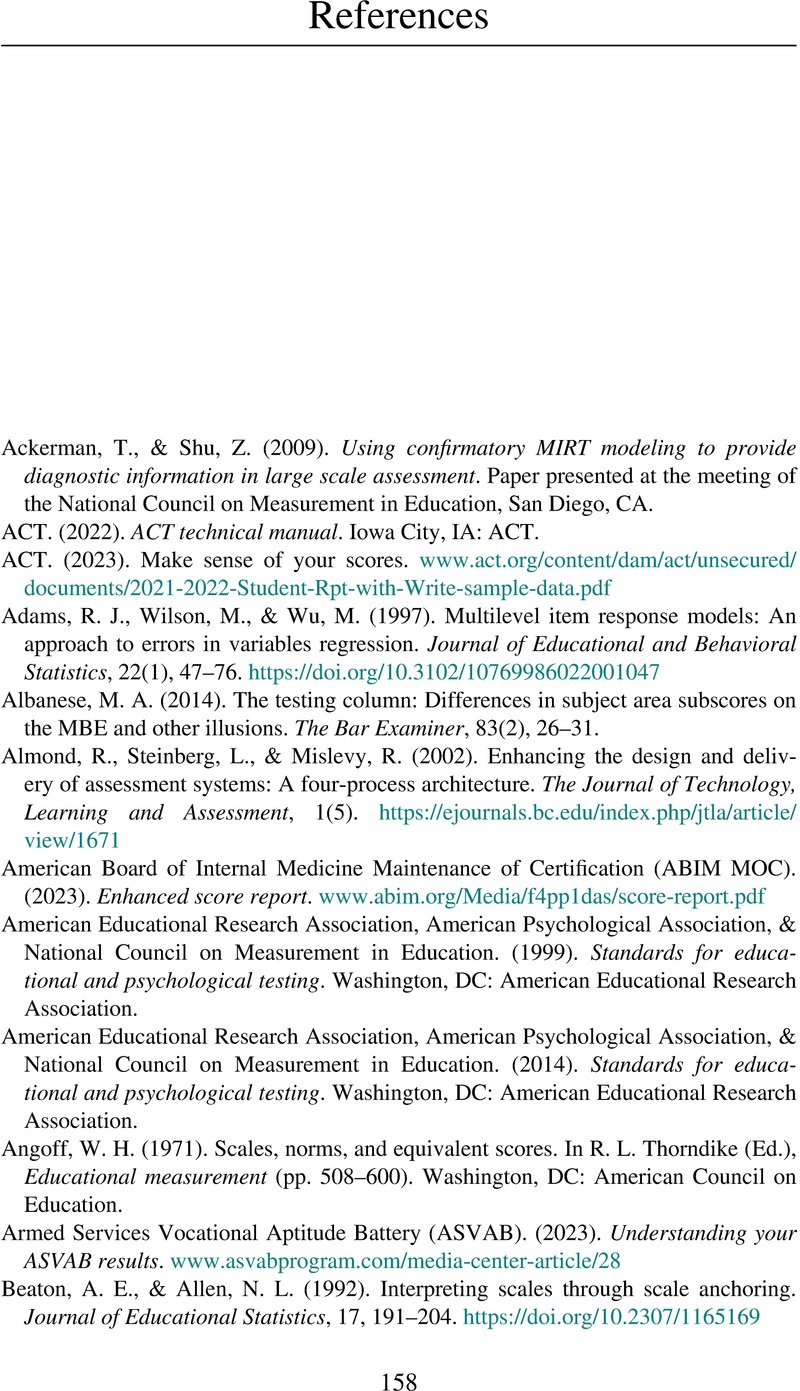Book contents
- Subscores
- Subscores
- Copyright page
- Dedication
- Contents
- Preface
- Acknowledgments
- 1 Introduction
- 2 How Are Subscores Reported?
- 3 When and How Should Subscores Be Reported?
- 4 A Survey to Explore the Conditions under Which Subscores Have Added Value
- 5 What to Do When Subscores Do Not Have Added Value
- 6 Coda
- Appendix The Data Sets That Are Used in the Survey of Chapter 4
- Glossary
- References
- Name Index
- Subject Index
- References
References
Published online by Cambridge University Press: 22 February 2024
- Subscores
- Subscores
- Copyright page
- Dedication
- Contents
- Preface
- Acknowledgments
- 1 Introduction
- 2 How Are Subscores Reported?
- 3 When and How Should Subscores Be Reported?
- 4 A Survey to Explore the Conditions under Which Subscores Have Added Value
- 5 What to Do When Subscores Do Not Have Added Value
- 6 Coda
- Appendix The Data Sets That Are Used in the Survey of Chapter 4
- Glossary
- References
- Name Index
- Subject Index
- References
Summary

- Type
- Chapter
- Information
- SubscoresA Practical Guide to Their Production and Consumption, pp. 158 - 168Publisher: Cambridge University PressPrint publication year: 2024

